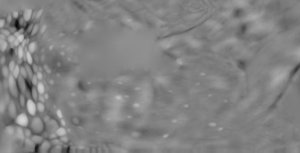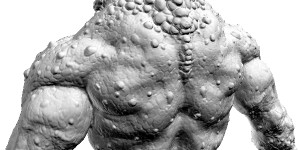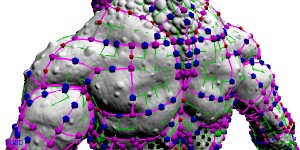|
|
The starting point in CySlice is a dense polymesh, usually from a 3D scanner, but it could be any source, for example a CAT scan iso-surface. |
|
|
Next the user draws guide curves over the mesh surface to define where the patches are to be placed. These curves can be moved around easily to adjust the surface flow over the underlying mesh. |
|
|
The resulting subdivision or quadmesh surface fits perfectly over the underlying dense mesh. At this point UVLayout is used to create UVs for the displacement and normal map extractions. |
 |
The extracted displacement or normal maps are then applied to the simplified surfaces at render time to recreate all of the detail of the original dense mesh. |


